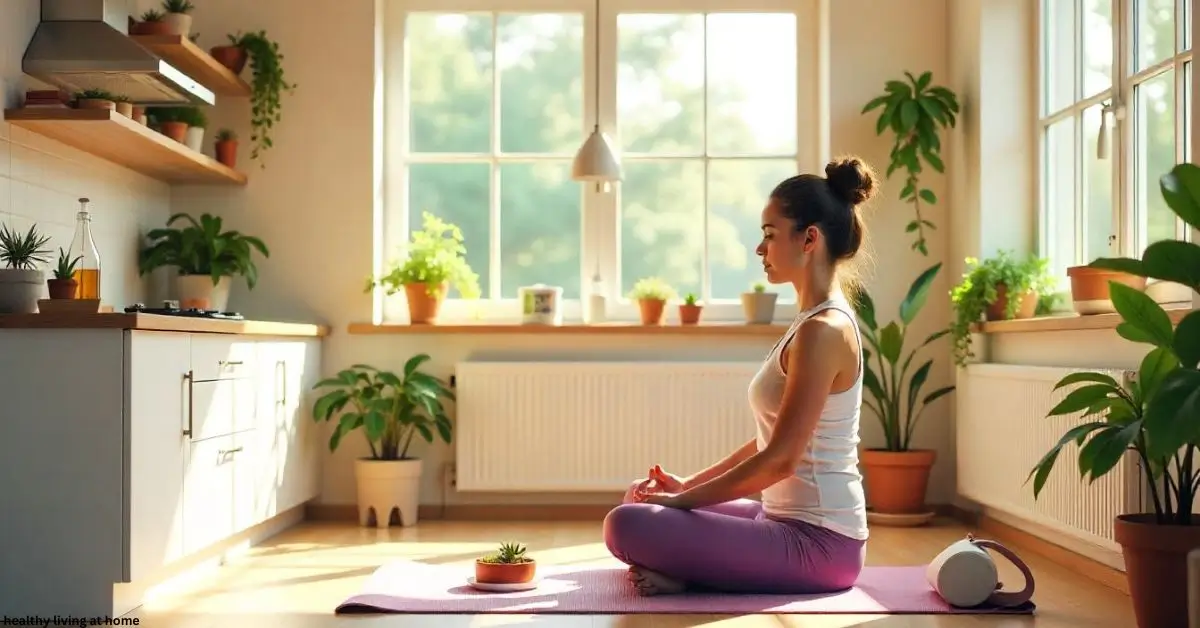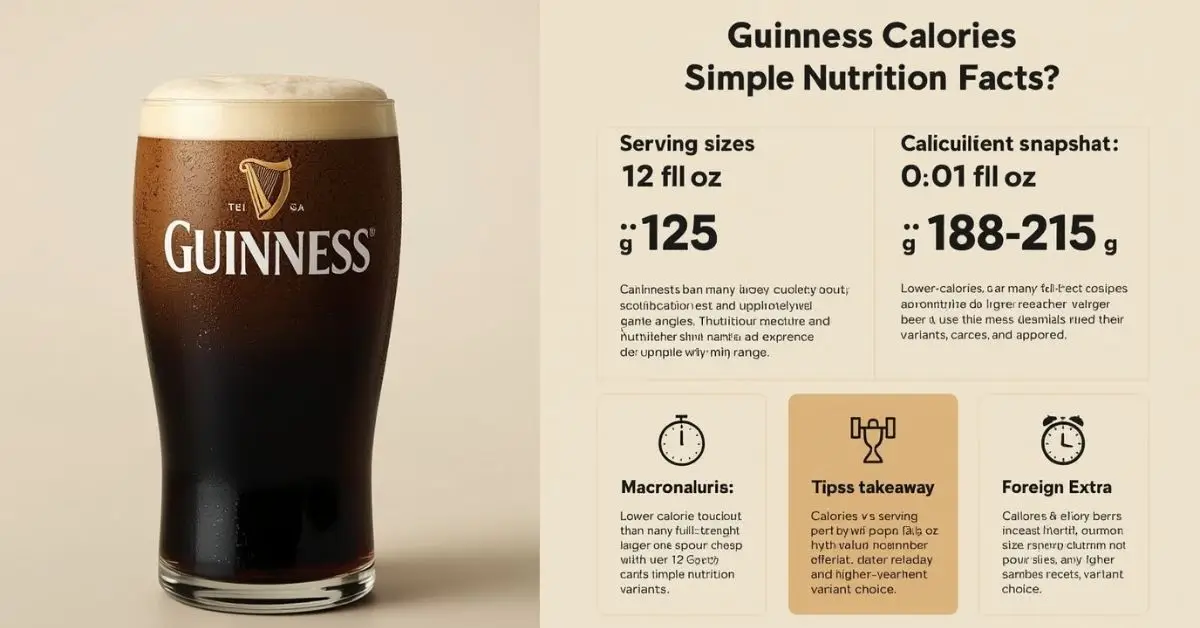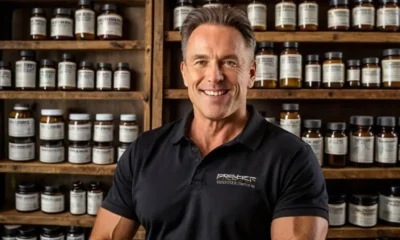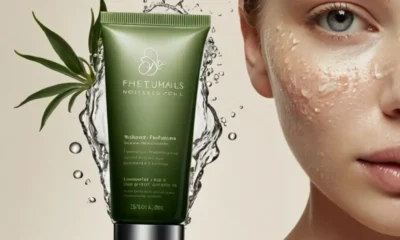GENERAL
Healthy Living at Home for a Better You

Healthy living at home has never been more vital than it is today. With changing lifestyles and an increasing awareness of wellness, people are now turning their attention to how they can create an environment that promotes physical, mental, and emotional well-being—right where they live. A shift towards home-based wellness practices has made it possible to live a healthier, more balanced life without stepping outside your door.
Whether you’re looking to improve your nutrition, incorporate more exercise, or manage stress more effectively, the concept of healthy living at home provides a holistic approach. Let’s explore expert strategies and insights to make your home a hub of health.
What Is Healthy Living at Home?
Healthy living at home is the practice of integrating wellness strategies into your daily household environment. It covers areas such as balanced eating, regular physical activity, mental health management, ergonomic design, indoor air quality, and digital detox routines—all geared toward creating a more nourishing space.
Experts agree that building these habits within your home not only supports long-term health but also boosts productivity and reduces healthcare costs. The World Health Organization has often emphasized that a healthy home environment is one of the foundational aspects of preventive health.
Benefits of Embracing Healthy Living at Home
Enhanced Mental Well-being
By reducing stressors like clutter and poor lighting, your mental clarity improves. Engaging in mindfulness and ensuring emotional safety at home leads to a happier state of mind.
Physical Health Improvements
Home-cooked meals, daily stretches, and hydration help prevent chronic diseases. Creating a home gym or using basic equipment can enhance cardiovascular health and muscular strength.
Financial Savings
You save money on medical bills, gym memberships, and unhealthy food takeout. Over time, healthy habits become cost-effective investments.
Stronger Family Bonds
When everyone in the household adopts healthful routines, communication improves. Activities like group exercise, cooking together, or practicing gratitude enhance emotional connection.
Practical Tips for Healthy Living at Home
Prioritize Clean Air
Maintaining indoor air quality is crucial. Use HEPA filters, avoid synthetic fragrances, and include air-purifying plants like snake plants or peace lilies.
Design an Ergonomic Space
Work-from-home setups must support good posture. Invest in ergonomic chairs, elevate screens to eye level, and take movement breaks every 30–45 minutes.
Optimize Your Diet
Stock your kitchen with whole grains, lean proteins, and fresh produce. Avoid ultra-processed foods and cook meals from scratch to control sodium and sugar intake.
Schedule Daily Exercise
Use simple routines like yoga, resistance bands, or HIIT workouts. Even walking around your backyard or dancing can count as beneficial physical activity.
Focus on Mental Wellness
Journaling, meditation, and affirmations can reduce anxiety. A calm corner for reading or simply unwinding helps you decompress from daily stress.
Comparison Table: Healthy Living Essentials at Home
| Feature | Cost | Efficiency | Ease of Use | Maintenance | Ideal For |
| Air Purifier | Moderate to High | High | Easy | Filter replacement | Allergy sufferers |
| Home Gym Kit | Low to Moderate | High | Moderate | Low | Fitness enthusiasts |
| Meditation Apps | Low | High | Very Easy | None | Mental health seekers |
| Healthy Meal Kits | Moderate | High | Easy | Weekly subscription | Busy households |
| Ergonomic Workstation | High | Very High | Moderate | Low | Remote workers/students |
Creating a Wellness-Centric Daily Routine
Establishing consistent rituals is key to healthy living at home. Here’s a sample routine you can adapt:
- Morning: Start with 10 minutes of stretching, hydrate with lemon water, and eat a high-protein breakfast.
- Mid-Day: Take a screen break every hour, opt for a walk during lunch, and include lean protein and fiber in your meal.
- Evening: Unplug from devices an hour before bed, practice gratitude journaling, and perform light stretching or breathing exercises.
Nutrition: The Cornerstone of Home-Based Wellness
Healthy eating is central to sustaining healthy living at home. Here are some proven strategies:
- Meal Prep: Dedicate Sundays to prepping meals for the week. This reduces the temptation of fast food.
- Smart Substitutes: Replace white rice with quinoa, butter with olive oil, and soda with infused water.
- Balanced Plates: Aim for 50% vegetables, 25% lean proteins, and 25% whole grains.
Eating consciously at home can help you better manage weight, blood sugar, and energy levels. As nutritionist Maya Feller once said, “Your kitchen can either be your health’s greatest asset or its worst enemy.”
Fitness Solutions Without Leaving Home
There are numerous ways to stay active at home. Consider these expert-endorsed methods:
- Bodyweight Workouts: Squats, pushups, and planks require no equipment.
- Mini Gym: Include resistance bands, kettlebells, and a yoga mat.
- Tech Integration: Use fitness apps or smartwatches to track progress and stay motivated.
The American Heart Association recommends at least 150 minutes of moderate-intensity activity weekly. Doing it from home makes it easier to maintain.
Mindfulness and Emotional Health
Stress and anxiety are common, but the home environment can serve as a powerful tool to counteract them:
- Declutter Regularly: Clutter can lead to mental fog. Minimalism promotes peace.
- Create a Relaxation Zone: A dedicated space for mindfulness, music, or aromatherapy works wonders.
- Digital Detox: Set boundaries for screen time, especially before bed.
“Silence and solitude at home are not luxuries—they are necessities for mental hygiene,” says Dr. Elaine Aron, a researcher in emotional well-being.
Hygiene and Wellness: The Overlooked Link
Maintaining a clean home is essential to healthy living at home:
- Clean High-Touch Surfaces: Disinfect doorknobs, remotes, and switches.
- Use Non-Toxic Cleaners: Avoid harsh chemicals that affect respiratory health.
- Laundry Hygiene: Wash bedding weekly in hot water to kill allergens and mites.
Smart Home Technology for Better Health
Technology can enhance your efforts toward a healthy lifestyle:
- Smart Thermostats: Maintain optimal room temperatures to support sleep and mood.
- Voice Assistants: Use for reminders about hydration, workouts, or mindfulness.
- Lighting Systems: Adjust brightness to sync with your circadian rhythm.
With the right setup, technology becomes a tool for health, not a distraction.
Sustainability and Health: A Dual Benefit
Living healthily at home also includes being kind to the planet:
- Compost Kitchen Waste: Enriches soil and reduces landfill load.
- Reduce Plastic Use: Switch to glass or stainless steel containers.
- Grow Herbs Indoors: Fresh basil, mint, and rosemary add flavor and health benefits.
Sustainable practices boost both environmental and personal health.
Social Health: Nurturing Relationships at Home
Healthy living at home includes fostering positive social interactions:
- Family Dinners: Promote bonding and better communication.
- Screen-Free Time: Designate tech-free hours for quality time.
- Conflict Resolution: Practice open communication and emotional intelligence.
A happy home is a healthy home.
Sleep: The Silent Healer
Sleep impacts almost every aspect of health:
- Set a Routine: Sleep and wake at the same time daily.
- Darken the Room: Use blackout curtains and avoid blue light before bed.
- Wind Down: Avoid stimulants like caffeine and screens late in the day.
Quality sleep strengthens immunity, mood, and memory.
The Role of Hydration
Dehydration is a silent enemy of productivity and health. Tips:
- Set Water Goals: Use a smart bottle or phone reminder.
- Infused Water: Add lemon, cucumber, or berries for taste and nutrients.
- Hydration Stations: Keep water accessible in every room.
Hydration supports metabolism, brain function, and detoxification.
Conclusion
Healthy living at home is not just a lifestyle—it’s a powerful form of self-respect and care. By making small yet impactful changes in your home environment, you can reap long-term benefits in physical, emotional, and mental well-being. From smart dietary habits and fitness routines to emotional balance and sustainable practices, your house becomes a sanctuary of wellness. Your journey begins within your four walls—make them count.
FAQs
What are the first steps toward healthy living at home?
Start by decluttering your space, improving your diet, and incorporating light daily exercise routines.
How can I stay active without equipment?
Use bodyweight exercises like squats, lunges, and planks, or follow free workout videos online.
Is cooking at home really healthier?
Yes, it helps control ingredients, reduces added sugars and salts, and ensures portion control.
Can mindfulness really improve home wellness?
Absolutely. Practices like meditation and journaling reduce stress and enhance clarity.
How often should I clean my home for optimal health?
High-touch areas should be cleaned daily; deep cleaning should happen weekly.
What’s a good hydration goal for a healthy lifestyle?
Aim for 8–10 glasses of water daily, adjusting based on activity level and climate.
GENERAL
What Are Guinness Calories? Simple Nutrition Facts 2025

Ever wonder if your beloved pint is sneaking in more calories than you’d like? You’ve been there. I’ll help you understand [guinness calories] the smart way—no fluff, just real-world facts and easy clarity.
Quick Answer
A pint (16 oz) of Guinness Draught has about 210 calories (about 35 kcal per 100 ml). Calories come mainly from alcohol and carbs. Simple, direct, no guesswork.
What’s in a 12-oz Guinness Draught?
This tells you exactly what’s in a standard serving.
You’ll learn the facts fast:
- 12 oz (~355 ml) of Guinness Draught has 125 calories (Alcohol 11.2 g, carbs 10 g).
- That’s ~35 kcal per 100 ml for Guinness Draught or Extra Stout. A full pint rounds to ~210 calories total.
Key Intake: A full pint = ~210 kcal; most calories come from alcohol.
How Do Variants Stack Up?
See how different types compare no guessing here.
| Variant | Calories (per 12 oz) | Key Notes |
| Draught | ~125 kcal | Standard, smooth |
| Foreign Extra Stout | ~194 kcal | Rich, roasty |
| Baltimore Blonde Lager | ~167 kcal | Hoppy, lighter |
| Guinness Smooth (per 100 ml) | ~57 kcal (~217 kcal pint) |
Key Intake: Higher ABV = more calories. Pick the one that fits your macro budget.
Why Calories Vary Breakdown by Source

Learn where the calories come from, not just numbers.
- Alcohol has 7 kcal per gram; in Draught, ~62% of calories are from alcohol.
- Carbs add the rest—around 10 g in a 12-oz Draught (~40 kcal).
Key Intake: Calories split roughly 60% alcohol, 40% carbs.
Non-Alcoholic and Low-Cal Alternatives
Find choices when you want flavor without the calorie hit.
- Guinness 0: only 17 kcal per 100 ml (≈ 68 kcal per pint).
- Good picks if you’re tracking macros or avoiding alcohol.
Key Intake: Guinness 0 is a clever low-calorie swap for your pint fix.
What This Means for Dieters & Health-Mindful Drinkers
A quick guide to fit Guinness into your nutrition plan.
- A pint ~ 210 kcal is moderate—less than many craft ales (160–180 kcal).
- If counting macros, know: alcohol is the main calorie source.
Key Intake: It’s not “diet-friendly” but moderate and trackable.
Final Takeaway
This isn’t sugar-coated. If you’re watching your calories, understanding “guinness calories” means choosing wisely, knowing exactly what’s in your pint, and fitting it into your wellness plan like a smart decision, not a hidden cost.
FAQ’s
How many calories are in a pint of Guinness?
~210 kcal per pint, based on ~35 kcal per 100 ml.
What’s the calorie content of a 12-oz Guinness Draught vs Extra Stout?
Draught ~125 kcal; Extra Stout ~180–194 kcal.
Are there lower-calorie alternatives to Guinness stout?
Yes—Guinness 0 has only ~17 kcal per 100 ml (≈ 68 kcal per pint).
Guinness calories vs Bud Light: which is lower?
Guinness Draught (~125 kcal) is similar or slightly higher than Bud Light (~110 kcal).
How many calories per gram of alcohol are in Guinness?
Alcohol contributes 7 kcal per gram; ~60% of calories in Draught come from alcohol.
Calories in Guinness Draught nutritional facts explained?
~125 kcal from alcohol (78 kcal) + carbs (~40 kcal), plus ~1 g protein.
Is Guinness high in calories for a diet plan?
It’s moderate; track it, and it can fit in but be mindful of alcohol calories.
Expert Citations
- Healthline: Detailed breakdown of calories from alcohol vs carbs in Guinness Draught.
- Guinness.com: Official calorie counts across variants (Draught, Extra Stout, 0.0, etc.).
- Guinness product pages: Precise nutrition data for each variant – Draught, Foreign Extra Stout, Blonde, Smooth, etc.
GENERAL
Why the Rory Masters Collapse Still Matters Today (2025)

Golf can be cruel. One minute you’re leading the Masters, the next you’re fighting to hold it together. Rory Masters collapse moments have given fans drama, heartbreak, and unforgettable TV.
We’ve all seen it happen, the missed shots, the tense body language, the scoreboard slipping away. But why does it happen to a player as good as Rory McIlroy? Let’s break it down.
Quick Answer
The Rory Masters collapse refers to multiple high-profile moments at Augusta where Rory McIlroy lost his lead, most famously in 2011 when he shot 80 in the final round, and again in 2025 with late-round bogeys. Causes include mental pressure, course difficulty, and external distractions like slow play. Yet, Rory has also turned these failures into motivation, ultimately winning the Masters in 2025 to complete his career Grand Slam.
Rory McIlroy: Masters Career Profile
| Category | Details |
| Name | Rory McIlroy |
| Date of Birth | May 4, 1989 (age 36) (ESPN.com) |
| Hometown | Holywood, Northern Ireland (ESPN.com) |
| Turned Pro | 2007 (ESPN.com) |
| Masters Titles | 2025 (First win; career Grand Slam completed) (Reuters, The Washington Post) |
| Notable Collapses at Masters | 2011 final-round meltdown (80, from 4-shot lead) (Wikipedia) |
| Masters Attempts Before Win | 17 attempts at Augusta by 2025 (The Sun) |
| Other Major Wins | U.S. Open 2011, PGA Championship 2012 & 2014, Open Championship 2014 (Data Golf, Wikipedia, Reuters) |
| Total Career Wins (2025) | 44 total: 29 PGA Tour, 18 European Tour, others (Talksport) |
| Career Grand Slam | Achieved with 2025 Masters win; one of six to do so (Reuters, Talksport) |
| Signature Moment | Emotional collapse to celebrating Green Jacket after playoff win vs. Justin Rose (The Washington Post) |
| Key Strengths | Multiple Majors, career Grand Slam, long-time world No.1 (European Tour, Reuters) |
| Resilience & Legacy | Climbed back from 2011 collapse to claim Masters, completing a decade-long quest (The Scottish Sun, Reuters) |
2011 The Collapse That Started It All
The first big Rory Masters collapse came in 2011.
- Rory led by four shots after three rounds.
- On Sunday, Augusta’s pressure took over.
- He shot an 80 and finished tied for 15th.
2025 A New Collapse, Same Augusta Pressure
Fast forward to 2025. Rory was 4-under through 14 holes in Round 1.
- Then came bogeys on 15 and 16.
- A double bogey on 17 sealed the damage.
Paul McGinley, former Ryder Cup captain, called it a slow play distraction McIlroy couldn’t shake. This wasn’t the first time Rory felt Augusta’s mental toll.
Why Collapses Happen at Augusta
Definition:
Mental collapse in golf Majors is when focus, rhythm, and execution fall apart under tournament stress.
Augusta National tests more than swing mechanics. It pushes the mind to breaking point.
Key factors:
- Course design: punishes tiny errors.
- Crowd energy: amplifies every mistake.
- Mental game: pressure spikes near the finish.
Rory’s Redemption 2025 Masters Win
Here’s the twist: despite the early stumble, Rory fought back. By Sunday evening, he wore the green jacket.
- He became only the 6th golfer to complete the career Grand Slam delay McIlroy had chased for over a decade.
- His win proved collapse doesn’t have to define you.
What Fans and Players Can Learn
- Stay present: Focus on one shot at a time.
- Adapt fast: Don’t let a bad hole become a bad round.
- Pressure prep: Simulate high-stakes moments in practice.
Real-world note:
I’ve seen players choke in local tournaments because they never practiced the mental side. Rory’s story shows why it matters.
FAQs
Why is Rory McIlroy’s Masters collapse famous?
It’s remembered for how quickly a winning position turned into a blowout, especially in 2011 when he led by four shots.
How many times has Rory collapsed at the Masters?
At least twice in high-profile ways — 2011’s final-round meltdown and the 2025 early-round stumble.
What caused Rory’s 2025 collapse?
Analysts point to mental pressure and slow play distractions from his group.
Has Rory ever recovered from a Masters collapse?
Yes. He won the Masters in 2025, securing his career Grand Slam.
Expert Citations
- Paul McGinley — TalkSport: “Slow play affected Rory’s rhythm.”
- Golf.com — “Analyst says slow play led to Rory’s Masters collapse.”
- Wall Street Journal — “McIlroy completes career Grand Slam with 2025 Masters win.”
GENERAL
What to Know About Johnny Depp Island in the Bahamas

You’re curious, and honestly—so am I. What’s it like to own a slice of Caribbean magic, hidden away from prying eyes? Especially when that slice belongs to a Hollywood legend. Let’s cut through the noise and get real.
Quick Answer
Johnny Depp’s Island is called Little Hall’s Pond Cay. He bought it in 2004 for about $3.6 million. It spans roughly 45 acres and is 60 miles southeast of Nassau in the Bahamas. He still owns it as of mid-2025.
Where is Johnny Depp’s Island located?
Here’s what you’ll learn: Its geography, how big it is, and where it sits in paradise.
- Located in the Exuma Islands, Bahamas, about 60 miles southeast of Nassau (Tuko.co.ke – Kenya News, Market Realist, News).
- Covers roughly 45 acres (18 hectares), a sizable tropical property with six beaches (Tuko.co.ke – Kenya News, Newszetu).
It’s a mid-size tropical hideaway, a boat-ride from Nassau. Pure, quiet, untouched.
What’s the story behind its name and purchase?
Here’s what you’ll learn: Why Johnny Depp bought it, what he named parts of it, and how he transformed it.
- Johnny Depp Island was discovered while filming Pirates of the Caribbean. He bought it in 2004 for about $3.6 million (Vanity Fair, News, Homes & Gardens).
- The six beaches are named after his loved ones and mentors—Gonzo (Hunter S. Thompson), Lily Rose, Jack, Brando (Marlon Brando), and Paradis (Vanessa Paradis) (Vanity Fair, Market Realist, People.com).
- He built a ranch-style main house with 360° views, solar-powered guest structures, a bamboo yurt, and a beach house—low-key luxury meets eco-sensitivity (DDW, Tinseltown Tales, DMARGE, CEO Today).
What makes it a sanctuary—and does Depp still own it?
Here’s what you’ll learn: Why it’s meaningful to Johnny Depp and if he still owns it.
- Depp calls Johnny Depp Island “pure and beautiful” and says you can feel your “pulse drop” there—instant freedom (Vanity Fair, Newszetu, Tinseltown Tales).
- As of mid-2025, he still owns it despite rumors of a sale to J.K. Rowling (CEO Today).
Celebrity & luxury context
Here’s what you’ll learn: How it fits with celeb real-estate and pop culture.
- Johnny Depp Island sits among other Bahamas celebrity islands, near properties owned by Eddie Murphy and David Copperfield (Tuko.co.ke – Kenya News).
- The island has hosted Depp’s wedding to Amber Heard in 2015 and served as a detox retreat during difficult times (Glamour, DMARGE, Market Realist).
Takeaway
From celebrity news readers to luxury travellers to real-estate enthusiasts, Little Hall’s Pond Cay—better known as Johnny Depp Island—is a rare, personal hideout that blends Depp’s eclectic style with genuine peace. Based on real-world reports and Depp’s own words, this island is more than property—it’s sanctuary.
FAQ’s
Where is Johnny Depp’s island located?
A private island called Little Hall’s Pond Cay, in the Exuma chain, 60 miles southeast of Nassau, Bahamas.
What is the name of Johnny Depp’s private island?
It’s called Little Hall’s Pond Cay.
How much did Johnny Depp’s island cost?
He bought it for around $3.6 million in 2004.
Can you visit Johnny Depp’s island in the Bahamas?
No—access is strictly by invitation only.
What’s the history of Johnny Depp’s Little Hall’s Pond Cay?
He discovered it during Pirates of the Caribbean filming, bought it, built eco-homes, and still owns it as of 2025.
What are some luxury aspects similar to this island?
Think celebrity-owned private islands—secluded, bespoke retreats designed for quiet, high-end living.
Expert Sources
- Vanity Fair – Their coverage on Johnny Depp Island includes direct quotes and historical context from the actor himself. (vanityfair.com)
- People Magazine – Their article on Johnny Depp Island offers fact-checked property details and insider background. (people.com)
- Homes & Gardens – A respected home and lifestyle publication that provides credible real-estate insights, including luxury property features and valuations for celebrity-owned estates. (homesandgardens.com)
-

 GENERAL5 months ago
GENERAL5 months agoGary Brecka Supplements: Unlocking Peak Human Performance
-

 GENERAL5 months ago
GENERAL5 months agoActivia Yogurt Nutrition Facts You Shouldn’t Ignore
-

 HEART TIPS5 months ago
HEART TIPS5 months agoCommon Heart Home Health: Trusted Cardiac Care at Home
-

 GENERAL5 months ago
GENERAL5 months agoWaterless Skincare: The Future of Potent, Eco-Friendly Beauty
-

 HEART TIPS5 months ago
HEART TIPS5 months agoTheralogix NeoQ10 Coenzyme Q10 Supplement – Heart Health
-

 HEART TIPS5 months ago
HEART TIPS5 months agoHeart Home Health Care: A Lifeline of Medical Excellence
-

 HEALTHY DIET5 months ago
HEALTHY DIET5 months agoArbonne 30 Days to Healthy Living
-

 GENERAL5 months ago
GENERAL5 months ago12 oz Coke Nutrition Facts: What’s Really Inside?
